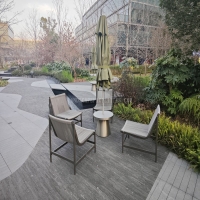Welcome to the website for landscape facilities products and knowledge.
How does the installation process of a landscape bar counter differ from an indoor bar counter?
The installation process for a landscape bar counter differs significantly from its indoor counterpart, primarily due to environmental exposure and structural requirements. Outdoor installations demand robust weatherproofing measures from the foundation upward. Unlike indoor bars that typically sit on existing flooring, landscape bars require concrete footings extending below the frost line to prevent shifting during freeze-thaw cycles. This foundation must be properly graded to ensure water drainage away from the structure.
Weather resistance dictates material selection for outdoor bars. Where indoor counters might use standard wood cabinetry, outdoor installations require marine-grade polymers, stainless steel hardware, or pressure-treated lumber rated for ground contact. All surfaces need waterproof sealants and UV-resistant finishes to withstand sun exposure and precipitation.
Utility integration presents another major difference. Indoor bars easily connect to existing plumbing and electrical systems, while outdoor installations often require trenching for dedicated lines. GFCI outlets must be weatherproofed, and any plumbing needs frost-proof sillcocks and proper insulation to prevent freezing. Lighting considerations extend beyond ambiance to include safety and code compliance for wet locations.
Ventilation needs diverge dramatically - indoor bars might require hood systems meeting fire codes, while outdoor bars need wind barriers and strategic positioning to mitigate weather interference. Drainage solutions become critical outdoors, requiring integrated channel drains or slight countertop sloping absent from indoor designs.
Finally, maintenance accessibility influences installation approaches. Landscape bars are built with easier component access for seasonal maintenance, while indoor installations prioritize seamless integration with interior aesthetics. The outdoor installation process ultimately focuses on creating a durable, weather-resistant structure that complements its natural surroundings rather than merely extending indoor living space.
Related search:

Recommendation
Metal structure rattan chair without armrests for single person, with woven seat and backrest.